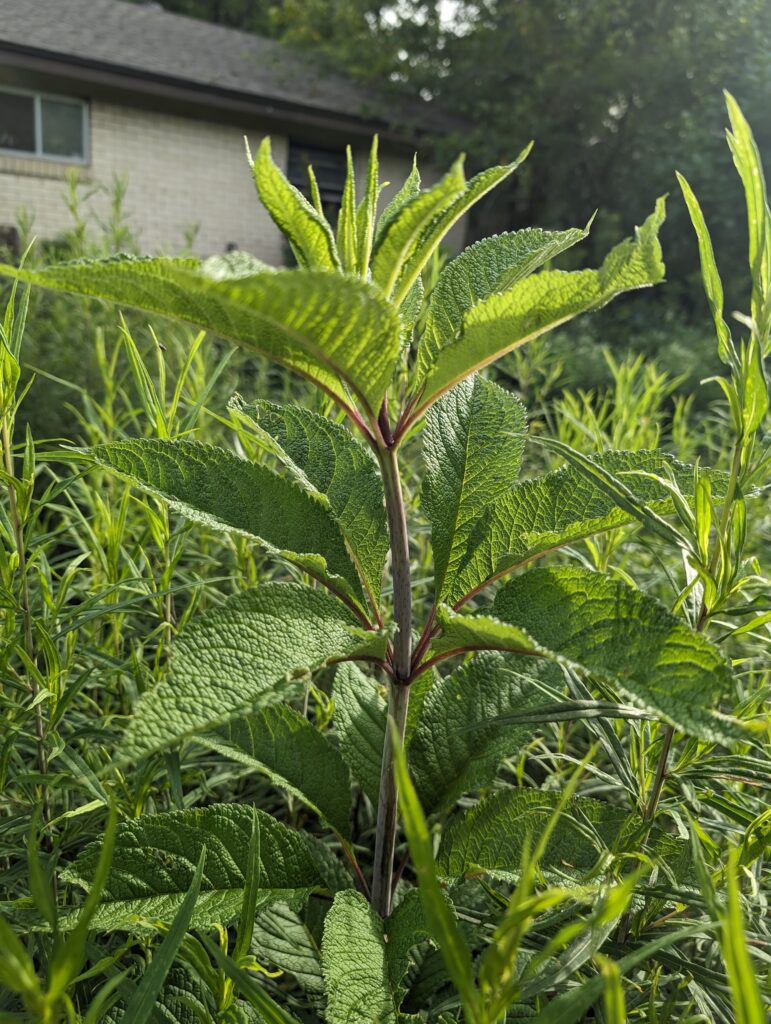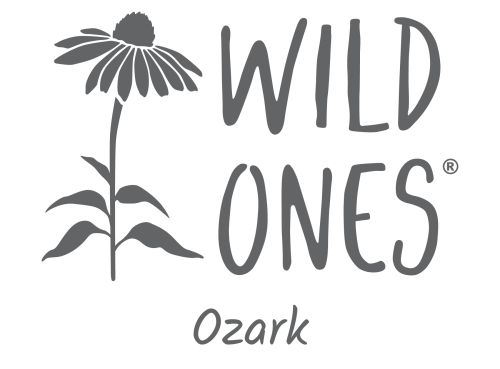By Danny Barron.
Flowers on most native plants last on average about 4 weeks. It would be wonderful for them to last longer, but there’s always the punch of something new opening to admire if you have a diversity.
But how about foliage that adds (usually in a quiet way) to the general attractiveness of your garden? Now hostas aren’t native, but there are lovely native plants that can certainly add attractive foliage to your garden and still be important food bases for our native insects. Tastes will differ but both very large or unique leaves and finely textured small leaves tend to appeal to people.
I’m going to talk about three, or four, or five. Yep, there’s a lot . . . and it’s just so hard to choose.

Many native grasses and sedges are very elegant and even formal. Switch grass (Panicum virgatum) is one of my favorites. Lovely spring foliage, lasting through summer, is even lovelier in the fall when the pinkish plumes come up, and it has great beige foliage all winter.

Here’s a sample of a large-leaved plant, downy sunflower (Helianthus mollis). It looks great spring through summer and is cheery when perfectly-formed sunflower blooms appear in mid-summer, but it may look a bit ragged by mid-fall as the leaves typically drop. There are others. One that comes to mind is devil’s walking stick (Aralia spinosa). I didn’t feature it because it won’t grow on my wet clay.

Large leaves, a stout stem, and regular leaf arrangement makes Joe Pye weed (Eupatorium fistulosum, most recently Eutrochium – darn taxonomists) resemble bamboo before flower clusters come out and give the pollinators a nice treat.

Finely divided leaves in an annual that eventually becomes covered with bright yellow daisies that are quite pollinator attractive, this is bearded beggarticks (Bidens aristosa). I almost left this one out, but then decided to go back and add it in.

Lastly, and certainly not leastly, Arkansas blue star (Amsonia hubrichtii) is just about a perfect foliage plant with very wispy thin leaves artfully displayed which turn golden in the fall. Everyone should grow it!
So remember to not forget the plants that have something besides flowers to recommend themselves.
